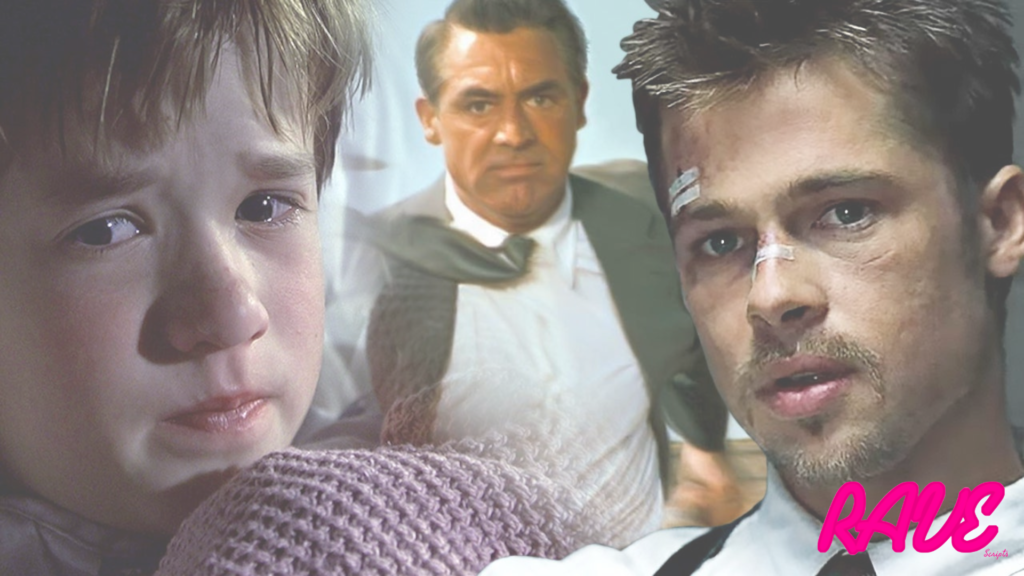Do you know how to write a thriller screenplay? Writing a thriller screenplay is a thrilling experience that requires a perfect combination of tension, suspense, and a captivating plot. In this blog post, we will explore the key elements that go into writing a successful thriller screenplay, from creating compelling characters to crafting a gripping narrative. Whether you’re a seasoned screenwriter or just starting out, this guide will help you master the art of writing a thriller that will keep audiences on the edge of their seats. So buckle up and let’s get started!
How To Write a Thriller Screenplay: Defining Your Thriller

To write a successful thriller screenplay, it’s important to have a clear understanding of the genre conventions and expectations. Thrillers typically feature a protagonist who is trying to solve a crime, stop a threat, or uncover a mystery, all while being pursued by an antagonist. The story is characterized by high stakes, fast-paced action, and unpredictable twists and turns.
A strong theme can give your thriller added depth and meaning. Some common themes in thrillers include power struggles, betrayal, justice, survival, and identity. Think about the central ideas you want to explore in your story and how you can use them to add layers of complexity to your thriller.
While it’s important to understand the conventions of the thriller genre, it’s equally important to develop a unique concept that sets your story apart. Consider the central conflict, the setting, the tone, and the characters. Are there elements of the thriller genre that you want to subvert or play with? How can you bring a fresh perspective to the story you want to tell?
The protagonist and antagonist are two of the most important characters in your thriller, so it’s important to get them right. Your protagonist should be relatable, likeable, and have a clear motivation for what they want to achieve. Your antagonist should be equally well-defined, with a clear motivation and a compelling backstory.
The tone of your thriller can have a huge impact on how the story is received. Thrillers can range from dark and brooding to fast-paced and energetic, so it’s important to choose the tone that best fits the story you want to tell. Consider the mood you want to create and how you can use elements such as music, lighting, and camera angles to reinforce the tone.
The world you create for your thriller can also contribute to the tone and atmosphere of the story. Whether you’re setting your story in the real world or in a completely imagined one, it’s important to consider how you can use the environment to reinforce the central conflict and the stakes of the story. Think about the physical, political, and cultural elements of your world and how you can use them to add depth and realism to your thriller.
How To Write a Thriller Screenplay: Building Tension and Suspense
Tension and Suspense Defined
Tension and suspense are two of the key elements that drive a thriller forward and keep audiences engaged. Tension refers to the feeling of unease or anticipation that builds up as the story progresses. Suspense, on the other hand, refers to the feeling of uncertainty and anticipation about what will happen next.
Pacing and Timing
Pacing is a crucial tool for building tension and suspense. By controlling the speed at which events unfold, you can create a sense of urgency and keep audiences on edge. Timing is also important, as you want to make sure that the most suspenseful moments are spaced out in a way that keeps the audience engaged.
Conflict and Stakes
Conflict and stakes are the driving forces behind any thriller. To create tension and suspense, it’s important to raise the stakes at regular intervals and make the consequences of the protagonist’s actions more dire. This will keep the audience invested in the outcome and wondering what will happen next.
Dialogue and Subtext
Dialogue can be a powerful tool for building tension and suspense. The words characters say and the way they say them can create a sense of unease or reveal their true motivations. Pay attention to subtext, or the underlying meaning behind what characters say, to create deeper, more complex relationships and to add an extra layer of suspense to your story.
Foreshadowing and Red Herrings
Foreshadowing is a technique that allows you to drop hints about what might happen later in the story. This can create a sense of anticipation and keep audiences on edge. Red herrings are false leads that can be used to mislead audiences and keep them guessing. Used wisely, these techniques can add an extra layer of suspense to your thriller.
Visual and Audio Cues
Visual and audio cues can be used to build tension and suspense in your thriller. For example, a tense score or sudden jump scares can create a sense of unease, while a tense camera shot or ominous sound effect can help ratchet up the stakes. Pay attention to how you use these elements, as they can have a big impact on how your audience experiences the story.
How To Write a Thriller Screenplay: Creating Compelling Characters

In a thriller, the characters are just as important as the plot. To create a compelling thriller, you need to develop well-rounded, believable characters that audiences will care about. This means giving them distinct personalities, motivations, and backstory that help to flesh them out and make them more than just caricatures.
The protagonist is the hero of your thriller and the character that the audience will identify with the most. To create a compelling protagonist, you need to give them a clear motivation and make them relatable. Think about what drives them and what they stand for, and use this to build a character that the audience will root for.
The antagonist is the person or group that the protagonist is up against. To create a compelling antagonist, you need to give them a clear motivation and make them believable. This means exploring their backstory and understanding what drives them to do what they do. The better you understand your antagonist, the easier it will be to make them a formidable opponent for your protagonist.
Supporting characters can also play a big role in a thriller, helping to advance the plot and create a sense of realism. To create compelling supporting characters, think about how they can add depth and nuance to your story. Give them distinct personalities and motivations, and use them to create tension and conflict.
Relationships between characters can also play a big role in a thriller, providing opportunities for tension, conflict, and suspense. To create compelling relationships, you need to think about how characters interact with one another and what motivates them. Are they allies, enemies, or something in between? How do their relationships change over the course of the story?
It’s important to think about the character arcs in your thriller. How do the characters change and grow over the course of the story? What are the turning points that shape their journey? By creating compelling character arcs, you can add an extra layer of depth and meaning to your story and make it more emotionally resonant for audiences.
How To Write a Thriller Screenplay: Plotting the Thriller
- Plotting is a critical component of writing a successful thriller screenplay. It is the structure that holds your story together and gives it direction. To plot a thriller, you need to think about the events that will take place and how they will drive the story forward.
- The inciting incident is the event that sets the story in motion. It is the catalyst that starts the protagonist on their journey. In a thriller, the inciting incident should be something that creates a sense of urgency and raises the stakes for the protagonist.
- Plot points are the key events that drive the story forward. To plot a thriller, you need to identify the major plot points and think about how they will impact the story. These points should escalate the tension and raise the stakes, keeping the audience engaged and wondering what will happen next.
- The act structure is the overarching structure of your thriller. Typically, thrillers are divided into three acts: the setup, the confrontation, and the resolution. To plot a thriller, you need to think about how you will divide your story into these three acts and what events will occur in each.
- Subplots are secondary storylines that run parallel to the main plot. To create a well-plotted thriller, you need to think about how subplots can be used to add depth and complexity to your story. Consider how subplots can impact the main plot and create additional tension and suspense.
- The climax is the most intense and suspenseful moment of the story, while the resolution is the conclusion. To plot a thriller, you need to think about how the climax will build on the events that have come before and what the resolution will be. The climax and resolution should wrap up the story in a satisfying way, leaving the audience with a sense of closure.
How To Write a Thriller Screenplay: Setting The Scene

The location is an important aspect of setting the scene in a thriller. It can impact the mood and tone of the story, and even influence the events that take place. To create an effective setting, you need to think about the location and how it can be used to your advantage.
Time is another important aspect of setting the scene in a thriller. You need to think about the time period in which your story takes place and how it impacts the events that occur. Consider whether your thriller takes place in the present day, in the past, or in the future, and what that means for the story.
The atmosphere is the overall mood and tone of the story. To create a suspenseful and thrilling atmosphere, you need to think about how you can use the location and time to your advantage. Think about how you can use the environment to create a sense of unease or danger, and what elements you can include to create a tense and suspenseful mood.
To fully immerse the audience in the setting, you need to think about how you can use the five senses. Describe the sights, sounds, smells, tastes, and textures of the environment to create a rich and detailed setting that feels real and alive.
To create a convincing and believable setting, you need to provide background information about the environment. Think about what the audience needs to know about the location and time period in order to understand the story. This information should be woven into the narrative in a natural way, so that it doesn’t feel like an info-dump.
Lastly, you need to think about how the setting can change over the course of the story. A change in setting can add tension and suspense, so consider how you can use this to your advantage. Think about what new environments and challenges the characters will face, and how these changes will impact the story.
How To Write a Thriller Screenplay: Pacing and Dialogue
- Pacing is an essential element of a successful thriller screenplay. It refers to the speed at which the story moves forward and how the events are presented to the audience. To create an effective pace, you need to think about when to ramp up the tension and when to slow it down, in order to keep the audience engaged.
- Action scenes are a key component of pacing in a thriller. They are intense and fast-paced moments that create tension and suspense. To write effective action scenes, you need to think about how you can use visual elements, such as camera angles and special effects, to bring the scene to life.
- Quiet scenes are the opposite of action scenes and are used to give the audience a break from the intense action. To create an effective pace, you need to think about when to insert quiet scenes into the story and how to use them to build tension and suspense.
- Dialogue is a crucial element of pacing in a thriller. It can be used to create tension and suspense, or to slow down the pace and allow the audience to catch their breath. To write effective dialogue in a thriller, you need to think about how you can use it to further the story and build tension and suspense.
- Subtext refers to the underlying meaning behind the words that characters are speaking. To create an effective pace, you need to think about how you can use subtext to build tension and suspense. Consider what the characters are really saying, even if they’re not speaking the words out loud.
- Timing is another important aspect of pacing in a thriller. To create an effective pace, you need to think about when to reveal key information, when to insert plot twists, and when to let the audience in on what’s really happening. Timing is crucial in a thriller, as it can greatly impact the audience’s experience and how they respond to the story.
Related:


Leave a Reply